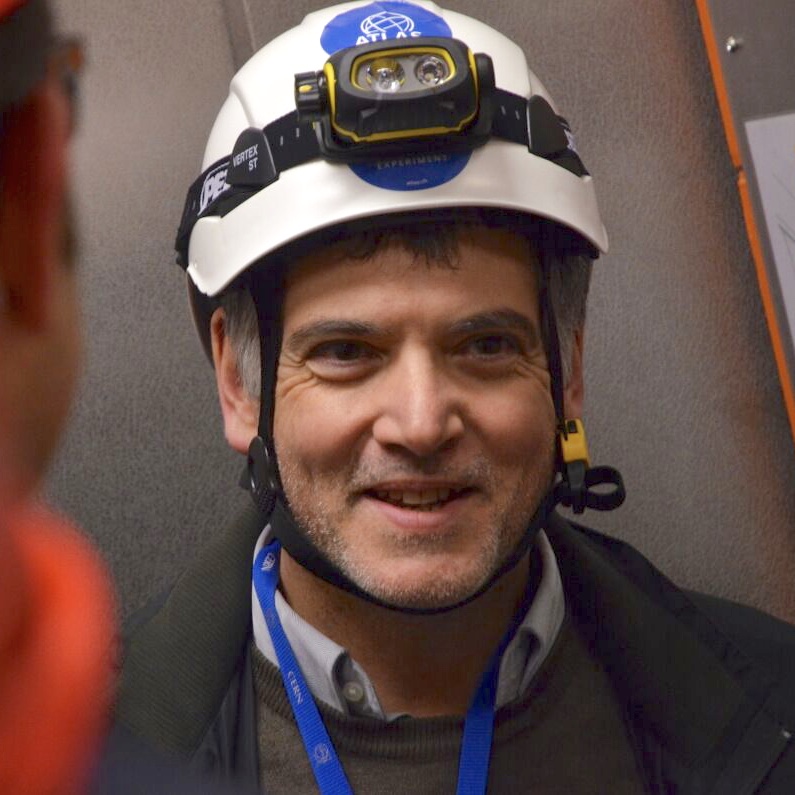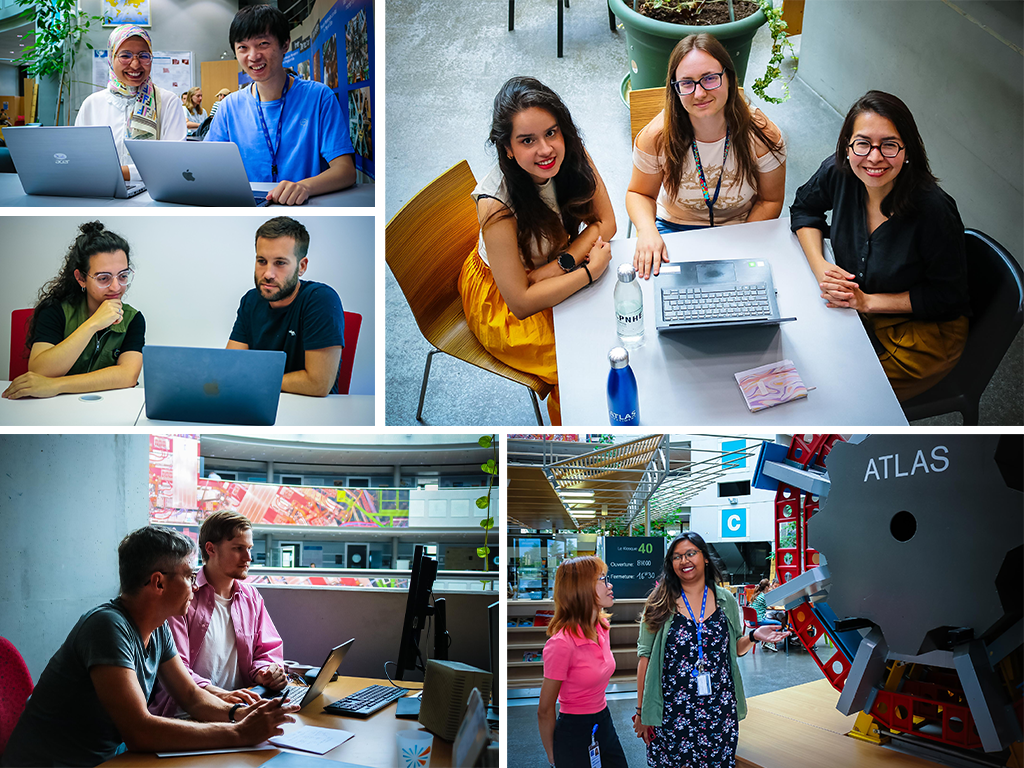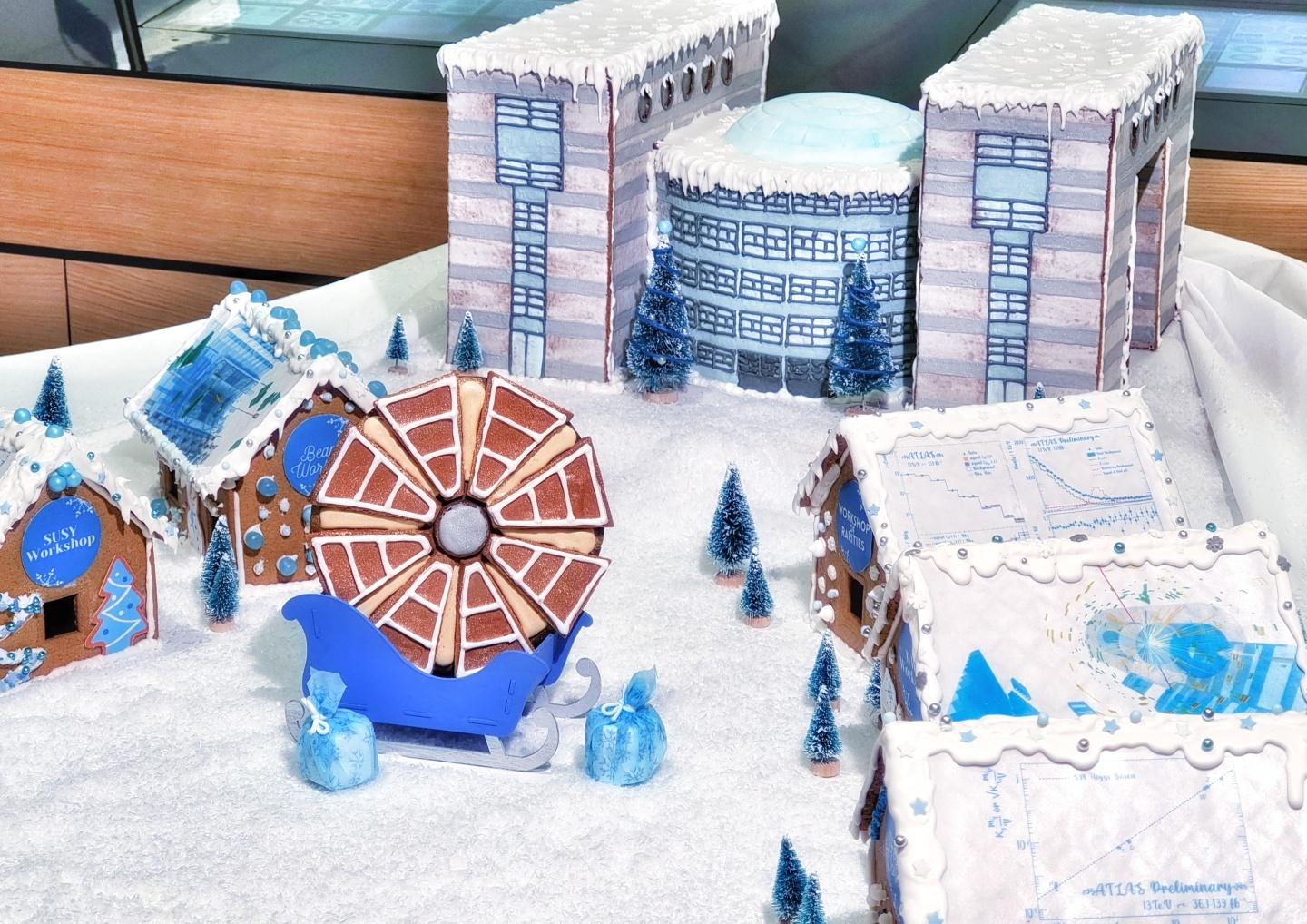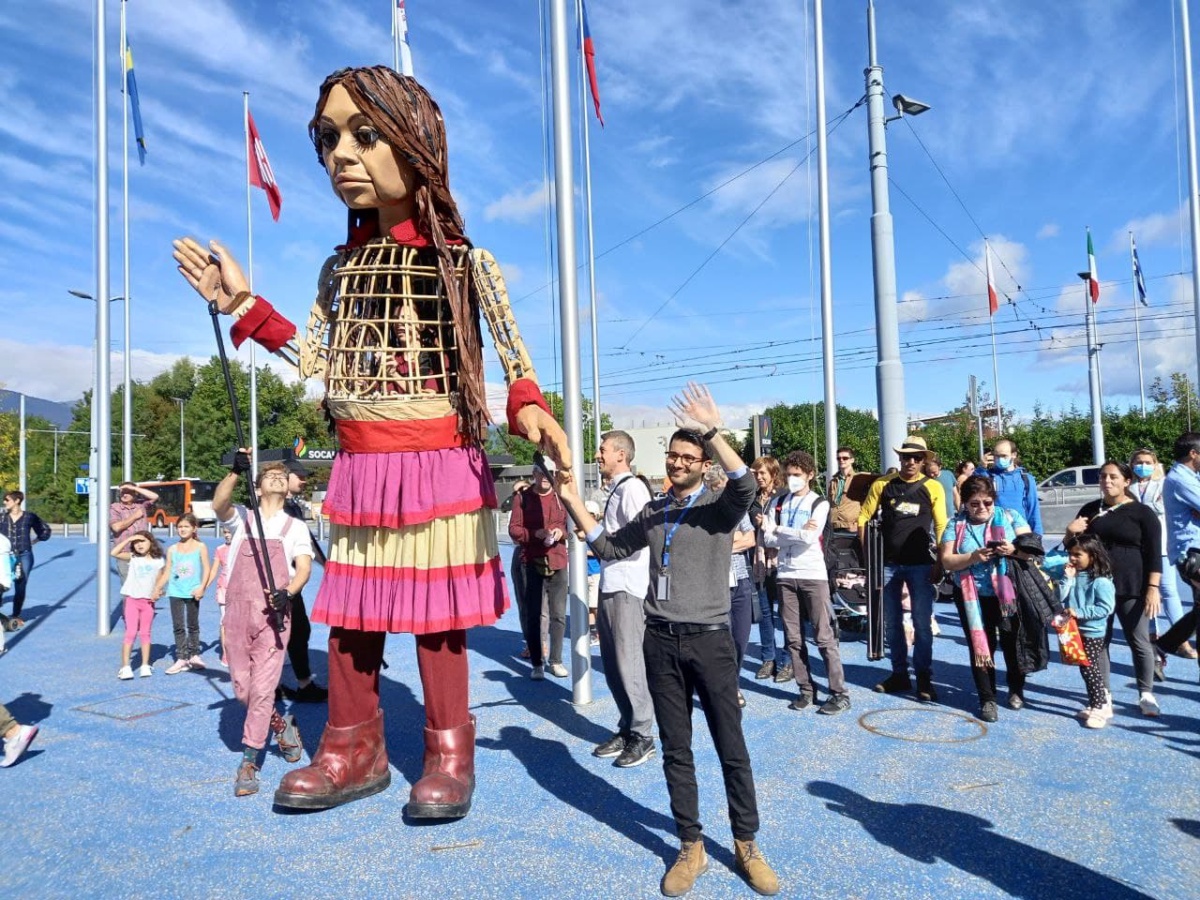Sharing the Excitement of ATLAS
22 December 2019 | By

This past week, I grabbed a last-minute opportunity to wander about and take in the beauty of my favourite particle physics detector. Located 100 meters under the French/Swiss border near Geneva, ATLAS is always a marvel to see and to explore. Although I have hosted hundreds of visits by its side, I never tire of the view and inevitably pull out my phone or camera to photograph it, yet again.
On this occasion, I was joined by my colleague, Kiley Kennedy, a Ph.D. student at Columbia University in New York. She and I were on hand to host an interview by the Lithuanian television station DELFI Lietuva. The hostess, Goda Raibytė, visited CERN several years ago, and has stayed in contact ever since. Kiley and I took turns answering questions about the progress the experiment has made over the past few years, the upgrades we are currently undertaking during our long shutdown, and what we hope to discover when the next run starts in May, 2021.
Note: Here is Kiley and Steve's interview with Goda Raibytė on Lithuania's DELFI Lietuva (published 22 Jan 2020). English audio follows the introduction.
Public engagement teaches Kiley to consolidate an understanding of her research, to see where it fits in the big picture and to hone her skills at communicating that message clearly.
As a seasoned veteran, I enjoy answering these questions, yet I still find it a challenge. Kiley and I had a responsibility to make sure our answers were clear to a lay audience. Even more important, was to convey the message that science, fundamental research and international collaboration are not only worth the investment, but essential to humanity. I think we managed. At the very least, the audience was treated to an exceptional view of the detector and Kiley’s remarkable enthusiasm for her research.
As a student, Kiley’s focus is set clearly on her contributions to the Liquid Argon Calorimeter, the detector subsystem her group maintains, and the analysis of data for her thesis. Although helping me with the underground interview could be seen as “taking a break” from her responsibilities, it is actually one of the more important components of her training. Public engagement teaches Kiley to consolidate an understanding of her research, to see where it fits in the big picture and to hone her skills at communicating that message clearly. I hope she will feature these skills proudly on her CV and that future employers will appreciate these values when considering her for a position.
This has not always been the case. Even as experiments have grown in size and geographical spread, scientists within those collaborations have had to work hard, not only to develop the tools and methods to support outreach, but also to convince their peers of its value. Today, I am very proud to work in a laboratory and on a collaboration that value these efforts and provide support for this vital work. Over time, our colleagues are recognizing education and public engagement to be not only a social obligation, but a strategic pillar of our field, raising awareness and support, and increasing global appreciation of science in society.
Scientific process, evidence-based decision-making and international collaboration are more vital now than ever before. If you have any doubts, just read the news.
In fact, as of today, six major particle physics experiments, CERN, and 26 countries provide support in the form of membership of the International Particle Physics Outreach Group (IPPOG). And that list is growing. With pending signatures of the High-Altitude Water Cherenkov Gamma-Ray Observatory (HAWC) in Mexico and the Helmholtz Centre for Heavy Ion Research (GSI) in Germany, IPPOG is spreading not only geographically, but also in scope, including astroparticle and nuclear physics alongside high-energy particle physics.
Why does this excite me? Well, O.K. – full disclosure – I will begin my second term as chair of IPPOG in January. But, more importantly, this collaboration is building networks, programs and activities that reach a broad spectrum of audiences around the world. Is particle physics that critical to our planet? It’s hard to say, but the methods we use certainly are. Scientific process, evidence-based decision-making and international collaboration are more vital now than ever before. If you have any doubts, just read the news.
Or don’t. I suggest your time would be better spent thumbing through the photos that Kiley and I took during our underground visit. We both ran around the detector like little kids, snapping pictures everywhere. It’s awesome to have a job that always inspires. Enjoy and Happy Holidays!
Photos below taken by S. Goldfarb, copyright ATLAS Experiment © 2019 CERN.


















